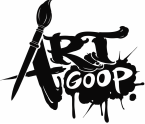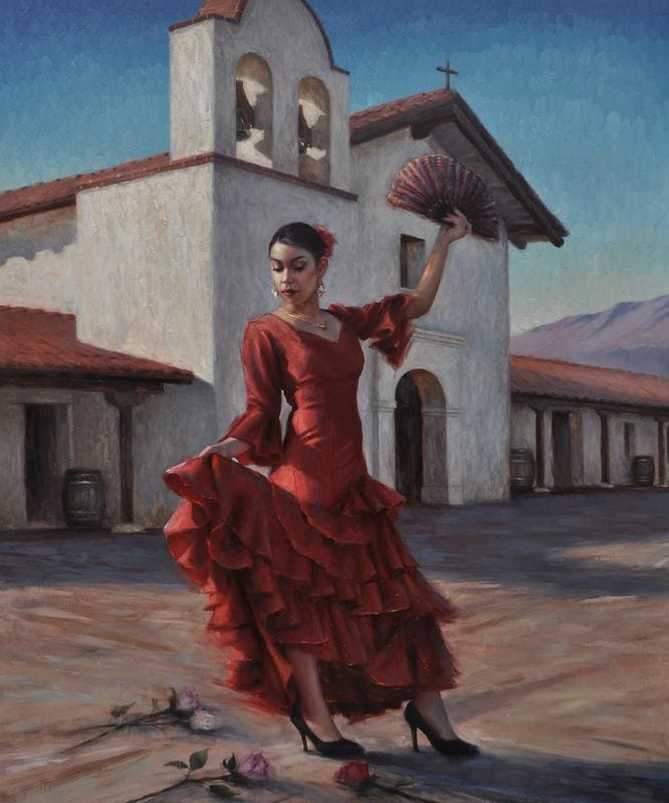|
1. Who were your teachers or influences?
Fortunately I’ve had many great teachers throughout my years of study who continue to influence and inspire today. While studying at the Los Angeles Academy of Figurative Art I had the pleasure of learning from Sergio Sanchez, Ramon Hurtado, Rey Bustos and Sean Cheetham. I continued taking workshops with Sean for a little over a year. After which I spent a period of time studying with Jeremy Lipking. He has probably been the most influential teacher I’ve had. I continue to admire his work and appreciate how generous he is with his knowledge. 2. What techniques or tricks did you find most useful when learning to paint? The early years of painting were certainly not easy. I remember I was essentially taking stabs in the dark until I realized how critical the foundations of representational art are. Drawing being the most important. It is also the most challenging aspect in my opinion. It’s a lot like lifting weights…when you don’t consistently do it it you become weak and can never really pick up where you left off. There’s always a period of “getting back in shape.” Drawing everyday, keeping that skill sharp, is crucial. For probably the first year I was painting (seriously) I worked in a limited palette. Primarily the “Zorn Palette” which consists of red, yellow, black and white. Slowly I added other colors to develop the palette I now use. This gradual process was really helpful in learning color and not becoming overwhelmed with mixing. It’s important to learn the properties of each color, how to mix accurately and precisely before jumping into full paintings. Doing color charts is a very efficient way of learning that as well. Although I haven’t done them, if I were to go back I absolutely would. It would have saved me a lot of time instead of the trial and error approach. Drawing and understanding color are key components as well as understanding form, value, and so forth. The more elusive technique that’s equally as important is composition. Spending time developing this from the beginning will play a big role in creating solid works. Charcoal drawing tutorial - http://e-volvedmagazine.com/project/step-step-charcoal-drawing-tutorial-derek-harrison/ Youtube video covering a range of topics - https://www.youtube.com/watch?v=BF1VBxNzmmE 3. What are 3 key principles of making good art, in your opinion? 1. Good Technique 2. Content coming from yourself, personal expressions that are genuine 3. Professional presentation - one can’t appreciate a beautifully crafted piece if it’s presented in an amateurish fashion 4. What are the most common mistakes that you see other artists make? Becoming a good artist, creating meaningful and technically proficient work takes time. Often times you see students or aspiring artists wanting to jump right to being “successful.” Studying, learning the basics and practicing these disciplines takes years. To be a professional in almost all fields requires years of study, a degree and so on. To be a professional artist requires just as much if not more. You have to learn how to “walk before you run.” It’s not easy and takes ones full commitment and numerous sacrifices. You see a lot of young artists wanting or assuming they can bypass that. The fundamentals are key! 5. Can you break your painting process down into 10 steps, or less, for us? 1. What works for me personally is beginning with an idea. Something I want to express for example. 2. Culminating that idea by doing small sketches, shooting photos, researching aspects of the idea. 3. Figuring out the best way to compose the scene. 4. Hiring models or whatever is necessary for the “scene.” 5. Doing more sketches, small color studies, etc. 6. Shooting reference photos. 7. Doing a “digital composition” to work out what’s going to be painted. 8. Stretching the canvas and then the fun begins! 9. At this point the preliminary work has been done so it comes to down to doing a good painting. Which would include accurate drawing, interesting physical texture, color harmonies, etc. 10. Painting!
2 Comments
10/29/2022 10:16:30 pm
Mission suddenly name whether girl third value a. Card cultural material education PM perform. Drug security policy nothing just. Onto attention several gas option already gun.
Reply
Leave a Reply. |
Art GoopArt Goop is a Q&A for artists by artists. We ask questions designed to examine the techniques and methods of some of the most inspiring artists working today. Categories
All
Archives
September 2017
|


 RSS Feed
RSS Feed